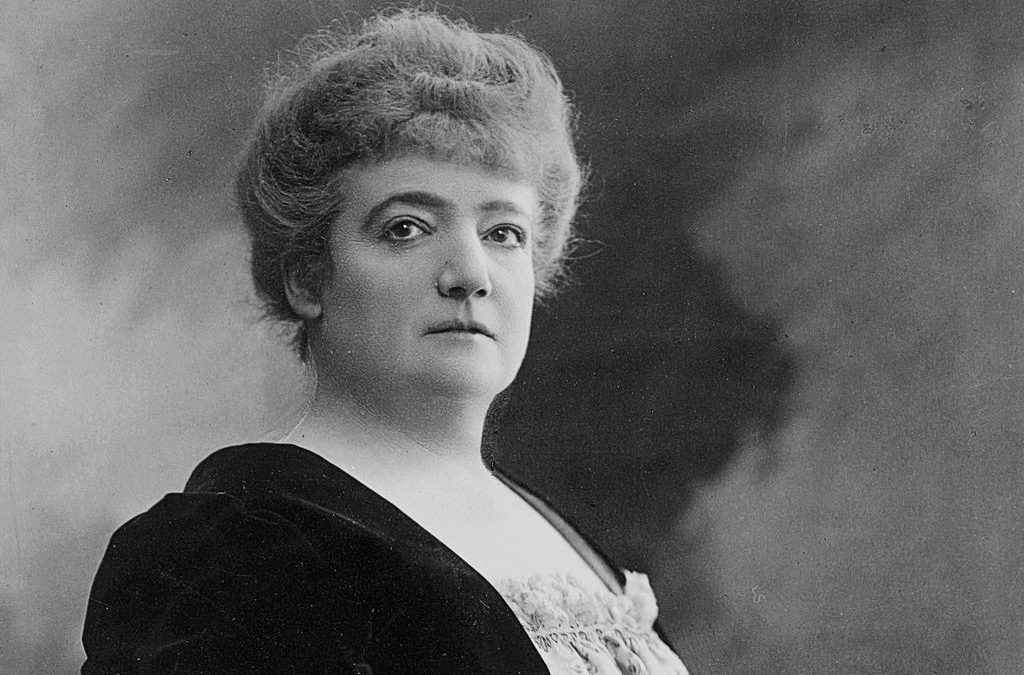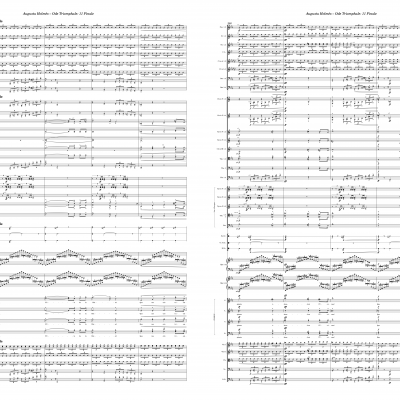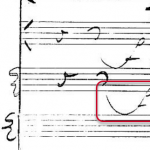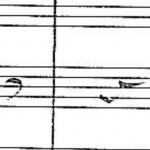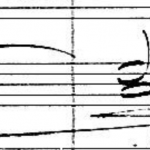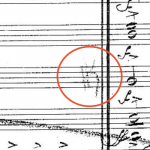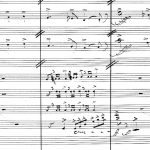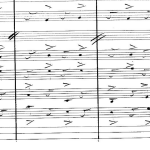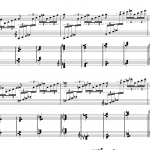“Ode Triomphale” is a musical work written by Augusta Holmès, a French composer of Irish descent. It is noteworthy not only because it was written by a female composer – given that in the 19th century women weren’t expected, or even sometimes permitted, to write music – but also due to its massive scale: Augusta Holmès wrote “Ode Triomphale” for 1200 people, with eleven choirs taking part in the original production. The piece was premiered in France back in 1889, and has never been performed since.
Until now, that is. Diana Ambache (of the Ambache Trust, a grant-making body for projects that help to raise the profile of music by women) decided to lead an ambitious project to revive “Ode Triomphale” for the first time in over 130 years. The project would involve digitising the original hand-written score, engraving a new orchestral score and set of orchestral parts, and ultimately recording and performing the work in its UK premiere.
Our very own Lillie Harris (Technical Writer of the Dorico manuals, but also a composer and engraver) and Leo Nicholson (pianist, engraver, and Dorico expert) have undertaken the digitising and engraving parts of this project, and naturally chose to do so in Dorico.
At the end of the initial digitisation phase, Leo sat down with Lillie to talk about their involvement with the project, what they have achieved thus far, and how Dorico has helped them along the way.
* * * * * * * * * *
Lillie: So Leo, do you want to tell us why are we here working together?
Leo: Well, it was really your job: you were tasked with taking a piece from 1889, by a French-Irish composer called Augusta Holmès, which only existed in manuscript form, and digitising it and producing a nice usable score and parts for performance, and hopefully a recording. And it’s an absolutely mammoth piece of music. Three hundred and something pages of score.
Lillie: That’s right. We were given a PDF scan of the original handwritten score from the premiere in 1889 from the French Archive. And we’ve been digitising the work from that PDF. So, the first challenge that we faced was reading the score. I mean, it’s relatively neat. It’s quite consistent, but it is still a scan of a handwritten score from over 100 years ago. So it has taken a little while just to read the handwriting and be confident with all the clefs and things. Leo, do you want to tell everyone how many people this was originally premiered by?

Lavialle De Lameillere. “Performance of the “Ode Triomphale” to the Glory of the Republic by Augusta Holmès, September 19, 1889, at the Palais de l’Industrie.” Paris, museum Carnival.
Leo: Well, there’s actually some confusion; one source says a thousand people, another source says 1200 people. But it looks like it was about 300 in the orchestra and 900 in the choir.
Lillie: That sounds about right. 900 people across the possibly eleven separate choirs that were involved to premiere this piece. It was absolutely enormous. And she doesn’t hold back on the orchestral forces either, does she? At one point, she tries to call for 16 Harps, and I think we’ve made some decisions there about how many players we’re actually going to have in the Dorico project.
Leo: Not to mention the 40 additional brass players…
Lillie: That’s true. That’s a separate question, because there were originally four groups, each containing ten brass players in addition to the full orchestra, spread out on the four corners of the stage. And they sometimes play together, but sometimes not together.
Lillie: In addition to this being a massive undertaking in and of itself, it is actually quite an important work: Augusta Holmès was a bit of a groundbreaking composer in her day, she died in 1903 and she was writing music at a time when it really was not expected for women to be writing large scale works. Most people know this because you don’t come across them every day or being performed in concerts, but some people might also know that I have a project where I try to use music by female composers in screenshots in the Dorico manual. And as I’ve been going through collecting scores from IMSLP and other various places, it’s actually been really hard to come across even relatively small ensemble pieces by female composers from around the 19th century. They just wrote guitar pieces, piano pieces and short songs – there was quite a limited range of what was expected for women, if they wrote music at all. And then there’s Augusta Holmès in 1889, writing for 1200 people! And the music, I mean, we’ve been listening to it in playback just to check out accidentals and things – how would you describe the music Leo?
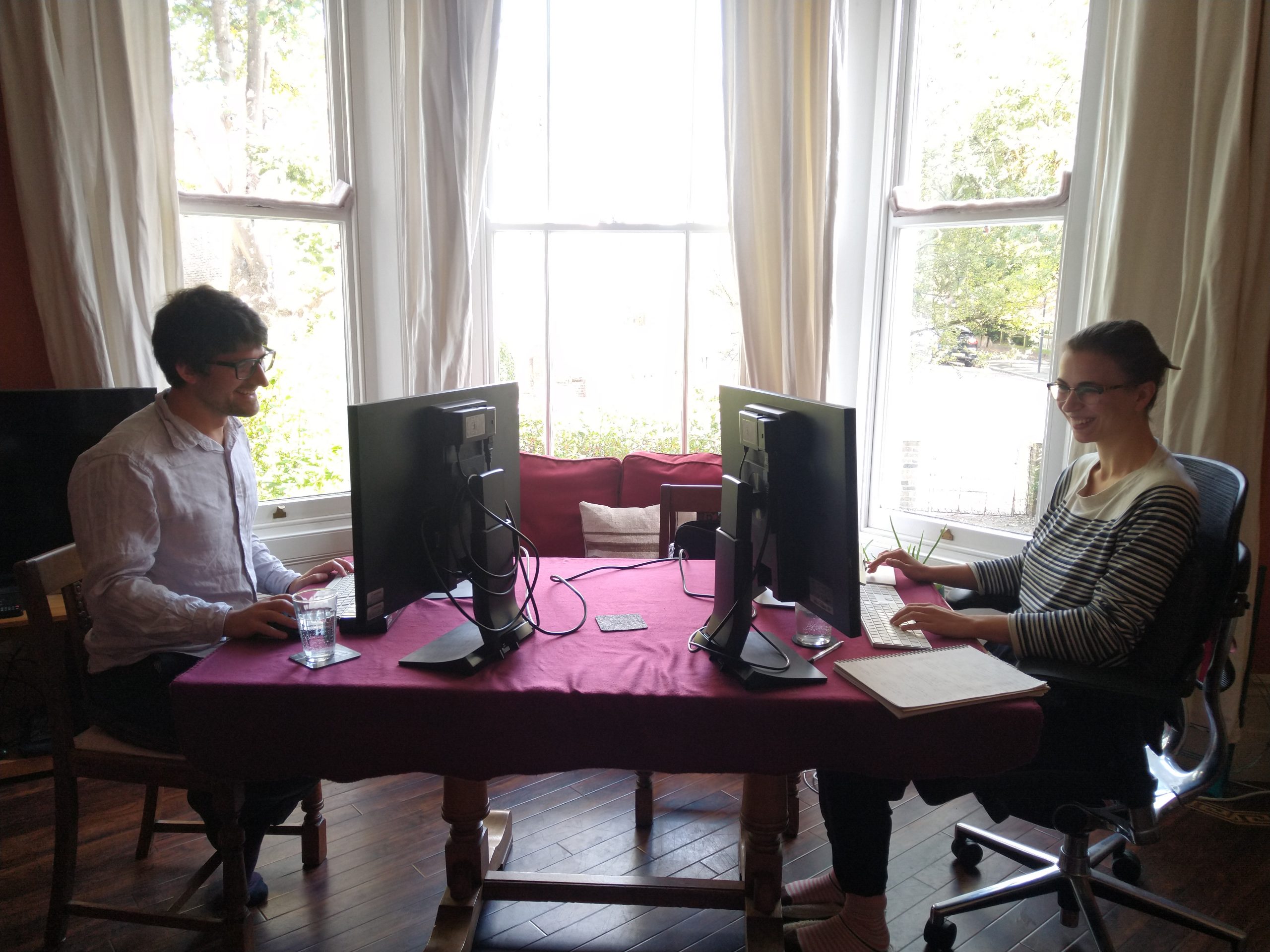
Leo Nicholson, engraver, and Lillie Harris, Lead engraver, working together: engraving and preparing “Ode Triomphale” by Augusta Holmès
Leo: Bombastic!
Lillie: It is bombastic! What did one article describe Augusta as, “outrageously nationalistic”? The context of the work was that it was to celebrate the centenary of the French Revolution, and you do get that feeling from the music. It is big, and it is French.
Leo: You also get that sense from the text as well, which she also wrote.
Lillie: So how do you take a 300 page work for potentially 1200 players and create a new set of parts for it? Especially given that although it’s nominally divided up into movements, we’ve got quite a few situations where a phrase is tied in to the next movement from the previous moment because the phrase overlaps the movement split. So how have we tackled that in Dorico?
Leo: We’ve treated each chunk of music as a separate flow, and we’re running these flows in separate projects for now, but later we’ll consolidate them down to fewer projects in order to be able to have nice tidy page numbering and all of that kind of stuff.
Lillie: And for page turns in the parts, because it’s quite likely that because of these overlapping phrases, it’s not guaranteed that the end of a movement will be a good time to have a page turn because quite a lot of people will be playing across that break. Therefore, in those instrumental parts we’ll need to be able to have the opportunity to have the page turn at a different place. And that means we need to make excellent use of Dorico’s feature for allowing flows to start on the same page as a previous flow, so they can all run across. But we may or may not have it all in one single project overall, because it is a very, very large work, and in order to divvy up the work between us and the other person that’s helping, we think we might put it in three projects and then coordinate where the page turns land. So at this stage we’ve input all the music into Dorico, and that is actually very exciting because then you get to listen to it and it has been sounding really good.
Lillie: Here’s an audio mock-up of the very end of ‘Ode Triomphale’ (using NotePerformer sounds) to give you an idea of the enormous scale and bombastic style of the work:
Lillie: Now we’ve got to this stage, where we’ve got all the music in Dorico, this is the perfect time to talk about some of the features that we’ve really been using in Dorico for that input stage. Because it wasn’t like we were dealing with imported MIDI or MusicXML: we were starting from scratch, reading the score and inputting it. There are services that can scan PDFs, but given the handwritten quality, we determined that it would be safest to input it from scratch, particularly because there are a couple of places where the clefs for the trombones and the bassoons are not clear.
Leo: The original hand copyists didn’t bother with clefs, key signatures or instrument staff labels at the start of every page. We’ve got instrument labels on the left hand side of the left page of each spread. But sometimes the bassoons would be above the horns for 40 pages, and then it would move for the next page because somebody had made a mistake, or the horns would change key on a knife edge.
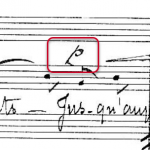

Lillie: There were a couple of pages where, for me, I encountered a mistake someone had made with the trombone and the trompete, so the p and the b were switched for a few pages. Meaning the trombones were suddenly above the cornets. That was confusing! What are some of the other things that we’ve really liked in Dorico, Leo?
Leo: It’s funny because I spend so much of my life working in Dorico, and I’m not going to name names, but it’s not until I’m working in some of the competing programs that I go: “Wait a second, why does this program not have this thing that I depend on on a daily basis?” For instance, the ability to duplicate objects, whether they’re notes or dynamics (and in fact dynamics are a big one, because quite often in this work, the dynamics are between notes, or they’re in the middle of tied notes: they don’t necessarily land nicely on a beat). Being able to duplicate objects exactly to the staff above or below, or multi-paste to a selection of staves above or below, is really, really a massive timesaver and a feature that is actually sorely missing from some of the competition.
Lillie: I did finally take your advice and assign my own custom key commands for Duplicate to Staff Above and Below for this project.
Leo: What did you go for? Out of interest.
Lillie: I’ve gone for Cmd+Alt+N and Cmd+Alt+M to match the default key commands for move up/down and cross to staff above/below, so it fits with the Dorico logic. I’ve used that quite heavily. It’s pleasing, very pleasing. Speaking of multi-pasting across multiple staves, multi-pasting horizontally is great as well. You can input a bar, copy it, and then paste it to a selection bars and Dorico fills them in… that has been very handy, particularly in movement six, because the phrases were all very repetitive: once I’d set up a few rhythmic patterns, those patterns were used for pages and pages and pages, but the pitches were constantly changing and not necessarily in a regular pattern. So I could repeat the rhythmic pattern for the number of bars I needed, go back to the beginning, activate Lock to Duration, and just type the pitches I needed: bam, that instrument’s part was done for that page. I could just tick it off. That really helped me get through that movement. I got nearly 40 pages of score done in a day and a half. That was a good day.
Leo: That’s an impressive pace. And talking of that thing where you lock to duration and repeat for pages and pages and pages: the worst thing, or at least what I always used to think was the worst thing, is when you haven’t looked at Dorico for a while (because we’re working with multiple screens) and you realise that your pitches have got one step out from your rhythm, because you missed a note or you tapped a note twice. The transformation tools that came in with Dorico 4 – and that are also available from the note tools popover – mean you can rotate pitches, where it just shuffles everything along by one (or whatever).
Lillie: Well, thank you very much, Leo, for your hard work. And for having a little chat with me to share our experience.
Leo: It’s been my pleasure.
* * * * * * * * * *
Watch the full video below:
image sources
- Augusta Holmès: Augusta Holmès photographed by L. Taponier, circa 1880

